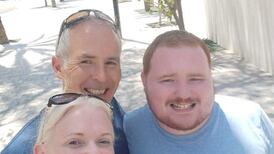The number of motorists tested for drug driving is to increase significantly in the coming months after the agency responsible for testing samples was given approval to expand.
In 2006 the Medical Bureau of Road Safety (MBRS) tested almost 1,000 samples from drivers for traces of seven classes of drug.
Head of the MBRS, Prof Denis Cusack, said last night the number of drivers tested is expected to "double or triple" and that it was taking steps now to increase capacity. This expansion will also involve a reorganisation of the MBRS.
An advert for a senior scientist in drug toxicology will be placed in the coming weeks, after the Department of Transport gave funding approval for the specialist post.
"That senior scientist will be asked to head up the expansion of the drugs testing programme both in terms of numbers and in terms of categories of drugs. This is the first phase [ of expansion]. There are a number of other phases on which we are in deliberations with the Department of Transport," Prof Cusack said.
Prof Cusack said that while the MBRS would concentrate on the seven classes of drugs for which it currently tests, in the future a wider number of substances would be tested.
"Part of the expansion programme will be to keep an eye on new types of drugs, and new variations on old categories. We will expand into testing for other drugs and illegal drugs as and when the need arises."
The MBRS has a representative on a national drug monitoring body which watches for changes in the type and composition of illegal drugs coming into the State.
The new road safety strategy 2007 to 2012 is also expected to set out a specific plan to tackle drug driving.
The expansion of the MBRS drug testing capability comes after a series of tests on a roadside drug testing kits produced disappointing results.
Researchers were hoping to develop such a product for use in roadside testing, similar to that now used by gardaí to test for alcohol, but none of the products tested achieved the necessary level of accuracy.
Roughly 16 per cent of motorists' drug samples tested were positive and this figure is even higher for drivers without alcohol in their bloodstream. This figure is on the increase and drivers under 25 showed the highest rate of positive tests at 25 per cent.
The MBRS has been working with gardaí to improve their ability to recognise possible signs of drug use when dealing with motorists at the roadside.











